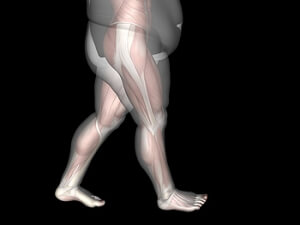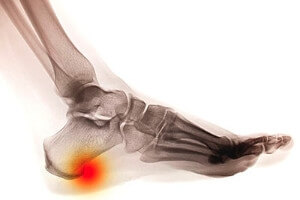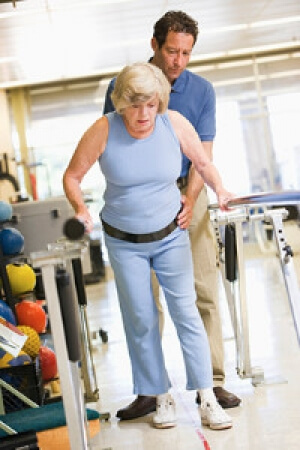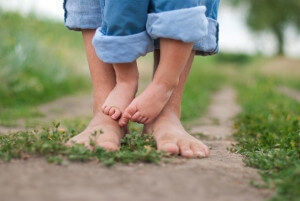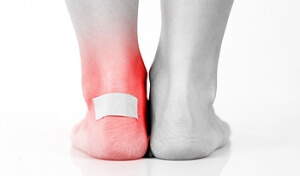Super User
Foot Pain May Come From Being Overweight
 Patients who are overweight may have an increased risk of experiencing ankle and foot pain. This may be a result of the excess body weight the feet must bear as everyday activities are completed. The natural pad in the heel area may become thin, and this may lead to heel pain which can be indicative of plantar fasciitis or heel spurs. People who are obese may have difficulty in performing daily exercise routines, which may contribute to the inability to lose weight. Pain may be experienced in the joints, ligaments, and muscles of the feet, and a sedentary lifestyle may be preferred. Research has indicated that foot pain may be controlled by maintaining a healthy weight, and this can be accomplished by eating healthy foods, and starting an exercise regime. If you have questions about how excess weight can affect the feet, please consult with a podiatrist.
Patients who are overweight may have an increased risk of experiencing ankle and foot pain. This may be a result of the excess body weight the feet must bear as everyday activities are completed. The natural pad in the heel area may become thin, and this may lead to heel pain which can be indicative of plantar fasciitis or heel spurs. People who are obese may have difficulty in performing daily exercise routines, which may contribute to the inability to lose weight. Pain may be experienced in the joints, ligaments, and muscles of the feet, and a sedentary lifestyle may be preferred. Research has indicated that foot pain may be controlled by maintaining a healthy weight, and this can be accomplished by eating healthy foods, and starting an exercise regime. If you have questions about how excess weight can affect the feet, please consult with a podiatrist.
Obesity has become very problematic at this point in time and can have extremely negative effects on the feet. If you’re an obese individual and are concerned about your feet, contact Richard P. Jacoby, DPM from Extremity Health Centers. Our doctor can provide the care you need to keep you pain-free and on your feet.
Obesity and Your Feet
Since your feet are what support your entire weight when standing, any additional weight can result in pain and swelling. Being overweight is one of the main contributors to foot complications.
Problems & Complications
Extra Weight – Even putting on just a few extra pounds could create serious complications for your feet. As your weight increases, your balance and body will shift, creating new stresses on your feet. This uneven weight distribution can cause pain, even while doing the simplest tasks, such as walking.
Diabetes – People who are overweight are at serious risk of developing type-2 diabetes, which has a drastic impact on the health of your feet. As you get older, your diabetes might worsen, which could lead to loss of feeling in your feet, sores, and bruises. You could also become more prone to various infections.
Plantar fasciitis – Pressure and stress that is placed on muscles, joints, and tendons can trigger plantar fasciitis, which is an inflammation of tissue that forms along the bottom of the foot.
If you have any questions please feel free to contact one of our offices located in Scottsdale and Buckeye, AZ . We offer the newest diagnostic and treatment technologies for all your foot and ankle needs.
What is a Common Source of Heel Pain?
 One common cause of heel pain is a foot condition known as a heel spur. With this condition, it’s common to notice redness and swelling around the affected heel. A heel spur is defined as a bone growth found in the heel, and it’s typically diagnosed by having an x-ray performed. The pain felt with this condition is usually noticed when one is walking, running, jogging, or partaking in other physical activities. To help ease the discomfort of this condition, it may be beneficial to rest the affected foot and to apply a cold compress on the heel. If you’re experiencing extreme pain in your heel, it’s important to get a professional diagnosis. It’s suggested that you speak with a podiatrist to help advise you on a proper treatment plan.
One common cause of heel pain is a foot condition known as a heel spur. With this condition, it’s common to notice redness and swelling around the affected heel. A heel spur is defined as a bone growth found in the heel, and it’s typically diagnosed by having an x-ray performed. The pain felt with this condition is usually noticed when one is walking, running, jogging, or partaking in other physical activities. To help ease the discomfort of this condition, it may be beneficial to rest the affected foot and to apply a cold compress on the heel. If you’re experiencing extreme pain in your heel, it’s important to get a professional diagnosis. It’s suggested that you speak with a podiatrist to help advise you on a proper treatment plan.
Heel spurs can be incredibly painful and sometimes may make you unable to participate in physical activities. To get medical care for your heel spurs, contact Richard P. Jacoby, DPM from Extremity Health Centers. Our doctor will do everything possible to treat your condition.
Heels Spurs
Heel spurs are formed by calcium deposits on the back of the foot where the heel is. This can also be caused by small fragments of bone breaking off one section of the foot, attaching onto the back of the foot. Heel spurs can also be bone growth on the back of the foot and may grow in the direction of the arch of the foot.
Older individuals usually suffer from heel spurs and pain sometimes intensifies with age. One of the main condition's spurs are related to is plantar fasciitis.
Pain
The pain associated with spurs is often because of weight placed on the feet. When someone is walking, their entire weight is concentrated on the feet. Bone spurs then have the tendency to affect other bones and tissues around the foot. As the pain continues, the feet will become tender and sensitive over time.
Treatments
There are many ways to treat heel spurs. If one is suffering from heel spurs in conjunction with pain, there are several methods for healing. Medication, surgery, and herbal care are some options.
If you have any questions feel free to contact one of our offices located in Scottsdale and Buckeye, AZ . We offer the latest in diagnostic and treatment technology to meet your needs.
The Importance of Proper Senior Foot Care
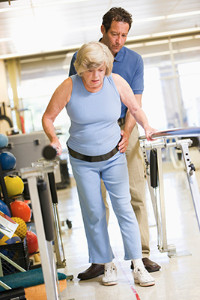 As the aging process occurs, the skin on the feet may become thin and lose cushioning. The feet may also be more susceptible to the development of uncomfortable foot conditions, which may include blisters and corns. Additionally, ingrown toenails may be a common ailment among seniors, as this can be a result of poor visibility while trimming the toenails. The feet may generally feel better when shoes and socks that are worn fit correctly, and it is beneficial to avoid wearing high heels. It may also be helpful to choose shoes that have Velcro fasteners, as opposed to laces that can be easily tripped on if they become untied. Many elderly patients choose to be under the care of a podiatrist, who can monitor any existing foot conditions.
As the aging process occurs, the skin on the feet may become thin and lose cushioning. The feet may also be more susceptible to the development of uncomfortable foot conditions, which may include blisters and corns. Additionally, ingrown toenails may be a common ailment among seniors, as this can be a result of poor visibility while trimming the toenails. The feet may generally feel better when shoes and socks that are worn fit correctly, and it is beneficial to avoid wearing high heels. It may also be helpful to choose shoes that have Velcro fasteners, as opposed to laces that can be easily tripped on if they become untied. Many elderly patients choose to be under the care of a podiatrist, who can monitor any existing foot conditions.
Proper foot care is something many older adults forget to consider. If you have any concerns about your feet and ankles, contact Richard P. Jacoby, DPM from Extremity Health Centers. Our doctor can provide the care you need to keep you pain-free and on your feet.
The Elderly and Their Feet
As we age we start to notice many changes in our body, but the elder population may not notice them right away. Medical conditions may prevent the elderly to take notice of their foot health right away. Poor vision is a lead contributor to not taking action for the elderly.
Common Conditions
- Neuropathy – can reduce feeling in the feet and can hide many life-threatening medical conditions.
- Reduced flexibility – prevents the ability of proper toenail trimming, and foot cleaning. If left untreated, it may lead to further medical issues.
- Foot sores – amongst the older population can be serious before they are discovered. Some of the problematic conditions they may face are:
- Gouging toenails affecting nearby toe
- Shoes that don’t fit properly
- Pressure sores
- Loss of circulation in legs & feet
- Edema & swelling of feet and ankles
Susceptible Infections
Diabetes and poor circulation can cause general loss of sensitivity over the years, turning a simple cut into a serious issue.
If you have any questions please feel free to contact one of our offices located in Scottsdale and Buckeye, AZ . We offer the newest diagnostic and treatment technologies for all your foot and ankle needs.
Elderly Foot Care
As you grow older, you will start to notice more problems with your feet due to wear and tear. This may also happen because the skin will start to become thin and lose elasticity. Some signs of aging feet are regular aches and pains, bunion development, and clawed toes.
Fortunately, there are ways you can improve comfort, relieve pain, and maintain mobility in your feet. One of the best ways to deal with aging feet is to exercise. If you keep active, your muscles will become toned which will then strengthen the arches in the foot and stimulate blood circulation.
It is important that you practice proper foot care to protect your aging feet. You should wash your feet in warm water on an everyday basis. Afterward, the feet need to be dried well and it is important to dry between the toes. Your toenails should be trimmed and kept under control; nails that are poorly cut may become ingrown. At the end of each day, performing an inspection of your feet will allow you to detect any ailments in their early stages.
As you grow older, it becomes more important that you wear comfortable shoes. Your shoes should be secure, and they should provide decent arch support. If you are looking to buy a new pair of shoes, it is best to look for a pair that are made from a breathable material. It is also helpful to have shoes that have a bit of extra room at the top of the shoe, especially if you suffer from swollen feet.
The most common foot problems that elderly people will encounter are bunions, calluses, corns, hammertoes, heel pain, and foot problems related to diabetes. Some other issues include arch pain, tarsal tunnel syndrome, Achilles tendonitis, and Morton’s neuroma
An annual foot examination is a great way for you to ensure that you do not have any serious health problems with your feet. You should talk to a podiatrist about the available treatment options for whichever foot issue you are dealing with.
How to Help Maintain the Health of Your Child’s Feet
 When a child is born, the bones in their feet are comprised of soft cartilage. Research has indicated that it is beneficial for a child to walk barefoot while indoors, as this may help the feet to become stronger. This can happen when the toes grasp the floor, and this generally benefits the entire foot. When your child walks outdoors, it is important to properly measure their feet, as this can help to best determine the correct shoe size. When the first shoes are purchased, it is suggested that they are made of a lightweight and breathable material, in addition to having non-slip soles. Children’s feet grow rapidly, and it is wise to have them measured approximately every six weeks. Many babies are born with flat feet, and the arches will gradually develop as the feet become stronger. If this fails to occur, it is advised that you consult with a podiatrist who can properly diagnose any foot condition your child may have.
When a child is born, the bones in their feet are comprised of soft cartilage. Research has indicated that it is beneficial for a child to walk barefoot while indoors, as this may help the feet to become stronger. This can happen when the toes grasp the floor, and this generally benefits the entire foot. When your child walks outdoors, it is important to properly measure their feet, as this can help to best determine the correct shoe size. When the first shoes are purchased, it is suggested that they are made of a lightweight and breathable material, in addition to having non-slip soles. Children’s feet grow rapidly, and it is wise to have them measured approximately every six weeks. Many babies are born with flat feet, and the arches will gradually develop as the feet become stronger. If this fails to occur, it is advised that you consult with a podiatrist who can properly diagnose any foot condition your child may have.
The health of a child’s feet is vital to their overall well-being. If you have any questions regarding foot health, contact Richard P. Jacoby, DPM of Extremity Health Centers. Our doctor can provide the care you need to keep you pain-free and on your feet.
Tips for Keeping Children's Feet Healthy
- Make sure their shoes fit properly
- Look for any signs of in-toeing or out-toeing
- Check to see if they have Clubfoot (condition that affects your child’s foot and ankle, twisting the heel and toes inward) which is one of the most common nonmajor birth defects.
- Lightly cover your baby’s feet (Tight covers may keep your baby from moving their feet freely, and could prevent normal development)
- Allow your toddler to go shoeless (Shoes can be restricting for a young child’s foot)
- Cut toenails straight across to avoid ingrown toenails
- Keep your child’s foot clean and dry
- Cover cuts and scrapes. Wash any scratches with soap and water and cover them with a bandage until they’ve healed.
If you have any questions, please feel free to contact one of our offices located in Scottsdale and Buckeye, AZ . We offer the newest diagnostic and treatment technologies for all your foot care needs.
Why Do Blisters Develop?
 Those who enjoy being active in the outdoors can understand the frustration that comes with developing blisters on the feet. Whether it is hiking, or partaking in an outdoor run or walk, blisters can make staying active very uncomfortable and often painful. They can be caused by increases in temperature which make the feet sweat excessively. Blisters can also form due to swelling of the feet, which in turn may cause chafing against footwear. This excess friction can cause the skin to protect itself, thus creating a blister. Mild relief may be found when comfortable shoes and quality socks are worn, cushioning the feet with insoles, and taping over areas of the feet that are more prone to developing blisters. If you would like more information on how to treat and prevent blisters, please consult with a podiatrist for professional care.
Those who enjoy being active in the outdoors can understand the frustration that comes with developing blisters on the feet. Whether it is hiking, or partaking in an outdoor run or walk, blisters can make staying active very uncomfortable and often painful. They can be caused by increases in temperature which make the feet sweat excessively. Blisters can also form due to swelling of the feet, which in turn may cause chafing against footwear. This excess friction can cause the skin to protect itself, thus creating a blister. Mild relief may be found when comfortable shoes and quality socks are worn, cushioning the feet with insoles, and taping over areas of the feet that are more prone to developing blisters. If you would like more information on how to treat and prevent blisters, please consult with a podiatrist for professional care.
Blisters are prone to making everyday activities extremely uncomfortable. If your feet are hurting, contact Richard P. Jacoby, DPM of Extremity Health Centers. Our doctor can provide the care you need to keep you pain-free and on your feet.
Foot Blisters
Foot blisters develop as a result of constantly wearing tight or ill-fitting footwear. This happens due to the constant rubbing from the shoe, which can often lead to pain.
What Are Foot Blisters?
A foot blister is a small fluid-filled pocket that forms on the upper-most layer of the skin. Blisters are filled with clear fluid and can lead to blood drainage or pus if the area becomes infected.
How Do Blisters Form?
Blisters on the feet are often the result of constant friction of skin and material, usually by shoe rubbing. Walking in sandals, boots, or shoes that don’t fit properly for long periods of time can result in a blister. Having consistent foot moisture and humidity can easily lead to blister formation.
Prevention & Treatment
It is important to properly care for the affected area in order to prevent infection and ease the pain. Do not lance the blister and use a Band-Aid to provide pain relief. Also, be sure to keep your feet dry and wear proper fitting shoes. If you see blood or pus in a blister, seek assistance from a podiatrist.
If you have any questions, please feel free to contact one of our offices located in Scottsdale and Buckeye, AZ . We offer the newest diagnostic and treatment technologies for all your foot care needs.
Ballet Dancing and Stretching the Feet
The majority o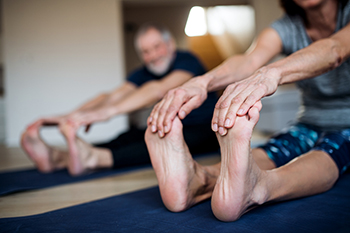 f ballet dancers understand the importance of properly stretching the feet before a dance recital. Proper balance is achieved when there is adequate strength and flexibility, and this is often accomplished by performing simple stretches. An effective stretch can consist of placing one foot over the opposite thigh while sitting on the floor, and pushing into the heel with your hand until a gentle stretch is felt. This is one of several stretches that can keep the flexibility that is needed for graceful ballet dancing. If you would like additional information about how to safely perform foot stretches that may help to enhance your dance routine, please confer with a podiatrist.
f ballet dancers understand the importance of properly stretching the feet before a dance recital. Proper balance is achieved when there is adequate strength and flexibility, and this is often accomplished by performing simple stretches. An effective stretch can consist of placing one foot over the opposite thigh while sitting on the floor, and pushing into the heel with your hand until a gentle stretch is felt. This is one of several stretches that can keep the flexibility that is needed for graceful ballet dancing. If you would like additional information about how to safely perform foot stretches that may help to enhance your dance routine, please confer with a podiatrist.
Why Stretching Is Important for Your Feet
Stretching the feet is a great way to prevent injuries. If you have any concerns with your feet consult with Richard P. Jacoby, DPM from Extremity Health Centers. Our doctor will assess your condition and provide you with quality foot and ankle treatment.
Stretching the Feet
Stretching the muscles in the foot is an important part in any physical activity. Feet that are tight can lead to less flexibility and make you more prone to injury. One of the most common forms of foot pain, plantar fasciitis, can be stretched out to help ease the pain. Stretching can not only ease pain from plantar fasciitis but also prevent it as well. However, it is important to see a podiatrist first to determine if stretching is right for you. Podiatrists can also recommend other ways to stretch your feet. Once you know whether stretching is right for you, here are some excellent stretches you can do.
- Using a foam roller or any cylindrical object (a water bottle or soda can will do), roll the object under your foot back and forth. You should also exert pressure on the object. Be sure to do this to both feet for a minute. Do this exercise three times each.
- Similar to the previous exercise, take a ball, such as a tennis ball, and roll it under your foot while seated and exert pressure on it.
- Grab a resistance band or towel and take a seat. If you are using a towel, fold it length wise. Next put either one between the ball of your foot and heel and pull with both hands on each side towards you. Hold this for 15 seconds and then switch feet. Do this three times for each foot.
- Finally hold your big toe while crossing one leg over the other. Pull the toe towards you and hold for 15 seconds. Once again do this three times per foot.
It is best to go easy when first stretching your foot and work your way up. If your foot starts hurting, stop exercising to ice and rest the foot. It is advised that you then see a podiatrist for help.
If you have any questions, please feel free to contact one of our offices located in Scottsdale and Buckeye, AZ . We offer the newest diagnostic and treatment technologies for all your foot care needs.
How to Stretch Your Feet
Your feet endure a great amount of stress each day from constantly allowing us to move around. It is important to stretch your feet to help prevent them from becoming injured. Your toes may easily deform into unhealthful positions if they are not stretched.
One of the most common reasons for toe deformities are the shoes you may be wearing. Shoes that are too tight may fold and shift the toes out of place. Heeled shoes may also push your toes upward. Forcing your toes into an unnatural position which may cause the muscles to tighten and prevent them from reverting to normal length. Another common reason is improper use of foot muscles. Many people fail to use the muscles in their feet or toes when they walk. Lastly, the positioning of your feet while walking may also cause toe deformities. If you walk with your feet facing outward, your “push-off” phase is on the side of your big toe instead of the bottom of your foot. This may cause the big toe to eventually tighten into a new shifted position.
There are many reasons why stretching your toes may be helpful. One reason is that healthy spacing may aid in avoiding calluses and other injuries that are caused by rubbing. Stretching will also prevent you from developing toes that curl, hammertoes, or bunions.
A great way to stretch your toes is to place them in your hands and bend them all downward; this will help you stretch the top of your foot. Next, you should repeat this process but instead bend them upward enough to feel a nice stretch in the bottom of your foot. You should then try to pull each toe apart from the next and pull any toes that are bent upward until they are back downward.
If you are looking to practice stretching your entire foot, you can try a towel stretch. This is done by sitting on the floor with your legs in front of you. Take a towel and wrap it around your toes. Afterward, pull the towel toward you with your toes and hold this position for 15 to 30 seconds before releasing. Practice this stretch for three sets. Another stretch your feet are towel lifts. This is done by sitting in a chair and trying to pick a towel up from the ground with your toes. Try lifting the towel with your little toes for five sets before switching feet.
If you are an athlete, or exercise often, it is especially important for you to practice stretching your feet. Those who suffer from foot pain caused by poor footwear, plantar fasciitis, or long hours of standing at work may also benefit from foot exercises.
What Causes Ingrown Toenails?
 Ingrown toenails occur when the nail grows into the skin surrounding it. While they generally occur on the big toe, they can affect any toe. One common cause of ingrown toenails is the shape of the nail. This can be hereditary. Nails that become more broad at the top of the toes or nails that are naturally curly have a tendency to push into the skin. Trauma to the toenail or wearing shoes that are too tight can also lead to ingrown toenails. Signs of an ingrown toenail include redness around the side of the toe near the nail, swelling of the toe, and liquid seeping from the side of the nail. Because ingrown toenails are prone to infection, it is important to visit a podiatrist especially if an ingrown toenail persists.
Ingrown toenails occur when the nail grows into the skin surrounding it. While they generally occur on the big toe, they can affect any toe. One common cause of ingrown toenails is the shape of the nail. This can be hereditary. Nails that become more broad at the top of the toes or nails that are naturally curly have a tendency to push into the skin. Trauma to the toenail or wearing shoes that are too tight can also lead to ingrown toenails. Signs of an ingrown toenail include redness around the side of the toe near the nail, swelling of the toe, and liquid seeping from the side of the nail. Because ingrown toenails are prone to infection, it is important to visit a podiatrist especially if an ingrown toenail persists.
Ingrown toenails can become painful if they are not treated properly. For more information about ingrown toenails, contact Richard P. Jacoby, DPM of Extremity Health Centers. Our doctor can provide the care you need to keep you pain-free and on your feet.
Ingrown Toenails
Ingrown toenails occur when a toenail grows sideways into the bed of the nail, causing pain, swelling, and possibly infection.
Causes
- Bacterial infections
- Improper nail cutting such as cutting it too short or not straight across
- Trauma to the toe, such as stubbing, which causes the nail to grow back irregularly
- Ill-fitting shoes that bunch the toes too close together
- Genetic predisposition
Prevention
Because ingrown toenails are not something found outside of shoe-wearing cultures, going barefoot as often as possible will decrease the likeliness of developing ingrown toenails. Wearing proper fitting shoes and using proper cutting techniques will also help decrease your risk of developing ingrown toenails.
Treatment
Ingrown toenails are a very treatable foot condition. In minor cases, soaking the affected area in salt or antibacterial soaps will not only help with the ingrown nail itself, but also help prevent any infections from occurring. In more severe cases, surgery is an option. In either case, speaking to your podiatrist about this condition will help you get a better understanding of specific treatment options that are right for you.
If you have any questions please feel free to contact one of our offices located in Scottsdale and Buckeye, AZ . We offer the newest diagnostic and treatment technologies for all your foot and ankle needs.
Ingrown Toenails
An ingrown toenail is a nail that has curved downward and grown into the skin. This typically occurs at either the nail borders or the sides of the nail. As a result, pain, redness, swelling, and warmth may occur in the toe. If a break in the skin forms due to the ingrown nail, bacteria may enter and cause an infection in the area; this is typically characterized by a foul odor and drainage.
Ingrown toenails have multiple reasons for developing. In many instances, the condition is a result of genetics and is inherited. The most common cause, however, is improper trimming; cutting the toenails too short forces the skin beside the nail to fold over. An ingrown toenail can also develop due to trauma, such as stubbing the toe, having an object fall on the toe, or participating in activities that involve repeated kicking or running. Wearing shoes that are too tight or too short can also cause ingrown toenails.
Treatment for an ingrown toenail varies between patients and the severity of the condition. In most cases, it is best to see your podiatrist for thorough and proper treatment. After examining your toe, your podiatrist may prescribe oral antibiotics to clear the infection if one is present. Surgical removal of either a portion of the nail or the entire nail may also be considered. In some cases, complete removal or destruction of the nail root may be required. Most patients who undergo nail surgery experience minimal pain afterward and can return to normal activity the following day.
Ingrown toenails can be prevented with proper nail trimming and by avoiding improper-fitting shoes. When cutting the toenails, be sure that you are cutting in a straight line and avoid cutting them too short. Shoes should not be too short or tight in the toe box.
